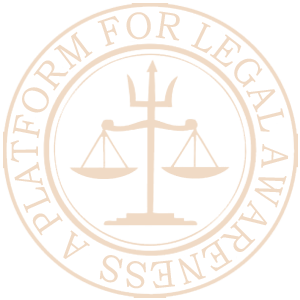This link of YouTube video is below:
An organised crime group is a category of transnational, national, or local groupings of highly centralised enterprises run by criminals who unlawfully attempt to regulate and control the production and distribution of a given commodity or service. Eventually, it is the product of a self-perpetuating criminal conspiracy involving the callous exploitation of society's social, political and economic institutions. It is majorly divided into three types:
Gang
A gang is an organised group of three or more individuals whose purpose is to engage in criminal activity and which utilises viciousness or terrorising to encourage its criminal targets. These criminals are recruited from among ex-convicts, escaped murderers, professional gangsters, and high-powered robbers.
The members collectively distinguish themselves by adopting a group identity, which they use to create an atmosphere of terror or intimidation. For instance, they may use a common name, slogan, identifying sign, symbol, tattoo or other physical markings, style or colour of clothing, hairstyle, hand sign or graffiti, and so on. They are equipped with modern pistols, bullet-proof vests, cars, etc. The gang criminals are efficient, disciplined, but dangerous.
According to Barnes and Teeters, "they live violently and expect violence." Their activities are spread over a large geographical area, moving from place to place but reuniting at prearranged hideouts. They are registered as hardened and habitual criminals in police records.
Gangs are composed of tough and hardened criminals who do not hesitate to kill, assault, or use violence. They are involved in robberies, kidnapping, murder, extortion, and smuggling. Some gangs are engaged in anti-social activities, taking a cut of the loot or a fixed amount of money for the help rendered. The gangs float a score of satellites, including restaurants, gambling dens, underworld messengers, women and children, and hangers-on.
Racket
A racket is a strategic or systematised criminal act, usually in which the criminal act is a form of business or a way to earn illegal or extorted money regularly. A racket is often a continuous criminal operation.
Donald Taft defines it as “an organised crime in which the criminal elements perform a service to such members of society who are normally engaged in some legitimate business activity”.
It also involves a dishonest way of getting money by deceiving or cheating people, selling worthless goods and articles, adulterated commodities, spurious drugs and so forth.
Racketeers do not take away all the profits but allow the owners of illegitimate businesses to continue their operations, such as prostitution, gambling, liquor trafficking, drug peddling, etc., but they give them (racketeers) regular fixed money. In fact, money is demanded and paid as consideration for the ‘protection’ given by a criminal group to the operators of the illegitimate business.
According to Caldwell, the racketeering gang is divided into the 'brains' and the 'muscles'. The former does the thinking, issues orders, solicits new business and arranges for protection. The latter do the beating, destroying, plundering, and even killing, i.e., all that is called the 'rough stuff.
However, Fitzgerald has stated that sometimes the 'brains' also do the jobs of the 'muscles' to maintain their leadership, enforce their authority, demonstrate proper techniques, and preserve their reputation. Such activities can have devastating consequences for both public and private institutions.
Some of the examples of racketeering are:
Protection racket, business labour racket theft operations, including Burglary, home invasion, robbery, identity theft, organised retail crime, shoplifting, and copyright infringement (including the sale of counterfeit goods).
Fraud and embezzlement operations, kidnapping, murder and murder-for-hire, bribery and police corruption, seduction, Cyber-crimes, drug trafficking, arms trafficking, extortion, prostitution and commercial sexual exploitation of children, Human trafficking, smuggling, witness tampering and intimidation, illegal gambling or bookmaking, including match-fixing and so on.
Crime Syndicates
Crime syndicates, often called ‘Mafia,’ are the most significant areas of organised crime groups that attempt to control the supply of protection. They create their own 'business' techniques, which are usually operated from established headquarters.
They avoid using violence and generally have a respectable position in society. They live in posh residential areas, freely associating with high-status persons and engaging in lawful earning pursuits. They mostly operate in big metropolitan areas, which happen to be big centres of communication, transportation, and distribution of goods.
The leaders of big crime syndicates periodically gather at fixed places to discuss problems of mutual interest and concern. They generally supply illegal goods and services through an organised criminal gang. The illegal goods could be drugs, liquor, etc., while the illegal services could be call girls, gambling, and so forth.
They have a proper hierarchy. They do not deal directly. Each syndicate has bosses who are usually behind the scenes. Frontmen/underbosses at various levels execute the work assigned to them. The underboss collects information, relays messages to the boss, and passes instructions down to underlings. In some cases, there is no underboss, but the boss has an adviser or a counsellor.
Below the level of the underboss are criminals who act as 'intermediaries' between the upper and lower-level personnel. Some of these intermediaries act as chiefs of operating units. The lowest-level members are ordinary criminals who report to the intermediaries.
Outside the structure of the syndicate are a large number of employees and agents who do most of the actual work in various criminal enterprises.
